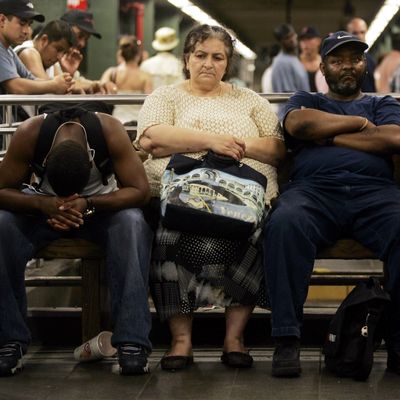
The Paris climate agreement to keep global temperature increases to 1.5 degrees Celsius is already looking improbable — though still not impossible — with just Morocco and Gambia staying on track. But any rise above the Paris goal, a new study shows, would increase the odds of heat waves, and the loss of life, in the major metropolitan areas of top-tier emitters like the United States.
Published in Science Advances, the study looked at deaths in past heat waves in 15 American cities to predict the likelihood of mortality in a one-in-30-year heat wave in a world with a temperature rise of 1.5, 2, and 3 degrees Celsius above pre-industrial levels. In such a spell, the lives of 2,716 New Yorkers would be saved if the global temperature rise can be limited to 1.5 degrees, compared to 3 degrees of warming. In Miami, that number is 1,235 lives saved; in Los Angeles, it’s 1,085. “At the path we are on, toward 3 degrees Celsius warming, we get into temperatures that people have not previously experienced,” said Peter Frumhoff, chief climate scientist at the Union of Concerned Scientists and a co-author of the study. With even a 2-degree temperature rise, however, mortality risk shoots up, with an additional 1,736 anticipated deaths in New York.
“The more warming you have, the more heat waves you have,” Michael Wehner, a staff scientist at the Lawrence Berkeley National Laboratory, told the New York Times. “The more heat waves you have, the more people die.” Wehner added that “the people that are at risk in cities are the very young, the very ill, and, generally, the poor. It’s people who don’t have access to air-conditioning.” In Europe, where air-conditioning is much less common than in the U.S., up to 132,000 deaths are predicted by the end of the century if the global temperature shoots up 2 degrees Celsius, the equivalent of 3.6 degrees Fahrenheit.
But with 1.5 degrees of warming, more vulnerable countries like India will still be exposed to profound effects, from 50 million people directly impacted by sea-level rise to extreme heat waves, like the one baking the northern city of Churu, where 100,000 residents coped with 122-degree Fahrenheit weather on Monday. “I have lived here all my life but have never felt this hot before,” a local journalist, Hanuman Verma, told the Washington Post. “It is horrid.”






























